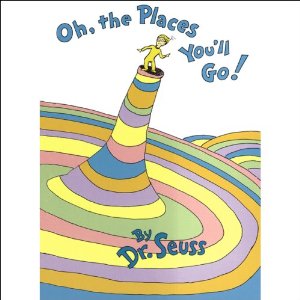Are We Seeing the Death of Traditional Couples?
The Trend of being in Love and Living Apart
New technologies, new lifestyles and new interests have dramatically changed the manner in which people view their personal lives. So many individuals aren’t getting married or they aren’t interested in finding a partner altogether.
Couples are also changing. A married couple which was once considered one of the most traditional and stable units of society is no longer the same. People now tend to get married later in life or not get married at all. They prefer alternative forms of togetherness like civil partnerships or being a couple without living together.
Seems bizarre and complicated! For some people, such relationships are confusing but others wouldn’t have it any other way. So, what has happened, is it still possible to find traditional happiness? Do you have to follow certain standards when it comes to relationships? Do you really need somebody else to be happy? Let’s try to find the answers to these questions.
Couples Living Separately? The Hows and Whys of being Alone in a Relationship
It looks like people are searching for more and more personal space. This quest has inevitably affected relationships and marriages.
According to a Psychology Today report, moving in together is seen as one of the most important steps that couples make in their relationship. This step makes things seem “official” and serious. Needless to say, more and more people are starting to feel terrified about this particular step.
Living apart seems to keep things fresh and exciting. There’s the novelty of dating or spending time at each other’s places. Celebrities like Helena Bonham Carter and Tim Burton who were married to each other from 2001 to 2014, did use the model of having two separate homes and living away from each other.
In essence, people are starting to challenge traditional norms and socially-acceptable standards. They’re experimenting with the notions of relationship and marriage. They’re exploring what would make them happy. Very often, this happiness doesn’t involve living together (even if the relationship is serious and committed).
Fear of Traditional Relationships
A generation of millennials seems to be challenging many norms and values their parents grew up with.
Millennials are challenging the traditional workplace. More and more people are opting for a freelance career or a home-based business instead. In addition, millennials are challenging traditional couplehood and they seem to be terrified of the marriages their parents used to enjoy.
An interesting essay that recently went viral is the perfect illustration of these new tendencies. The essay is called I Want to be Single – but with You. The essay is the creation of Canadian writer Isabelle Tessier, it’s been liked more than 206,000 times on Facebook and has generated a lively discussion consisting of more than 900 comments.
Many people are already working on opportunities to find such an arrangement – an arrangement that will lead to quality time together but that will also give people independence (the feeling of being single).
Even people in traditional marriages are demonstrating some fear of the traditional notions linked to being married. Wall Street Journal published a report about a married couple that has designed its living space in a way that corresponds to individual needs. These two people often cook their separate meals, they have separate living spaces and even two separate home entrances.
Are couples taking a step too far? It all depends on an individual’s emotional needs and whether these quirks stem from a fear of commitment or a genuine desire to maintain one’s individuality in a relationship.
Simpler Options for Getting It Right
Maintaining one’s individuality in a relationship or a traditional marriage can be much easier than many millennials believe it to be. Many of the fears linked to being in a traditional relationship are highly misguided.
Yes, people need quality alone time and they need to maintain their individuality within the couple. Accomplishing the goal, however, doesn’t have to involve living apart or maintaining a living space that will keep two people from bumping into each other. The answer is hidden in the following basic rules:
- Giving Each Other Space
- People need to spend some time dedicated to their favorite hobbies and activities. Often, this time doesn’t involve the participation of a spouse. Having such quality time and giving each other enough space is one of the essentials for keeping the spark alive and feeling fulfilled in the relationship.
- Having Close Relationships With Separate Groups Of Friends
- Both people in a relationship need to have their unique support system. Having common friends is a lot of fun but quality time with the girls or the boys is incredibly beneficial. These friends happen to be the reality check all of us need.
- Establishing Alone Time
- Establishing regular alone time each week may feel weird in the beginning but both partners will soon get used to the new schedule and they’ll eagerly await the opportunity.
- Alternating Between Alone Time And Being Together:
- Come up with a routine that involves both alone time and being together. For example, one of the partners could wake up early for a workout session with friends. Once this individual is done exercising, the couple can have breakfast and coffee together. Alternating between activities this way will make the bond stronger by balancing the two components of a healthy relationship.
Some people want to get married from an early age. Others would be happy spending their entire life being in casual relationships. The trick is to find somebody that has a similar view. As long as two people view the world in a similar way and are wishing to make each other happy, the relationship will be fulfilling regardless of its quirks.
Cohabitation or, as it’s more commonly called, living together, precedes more than half of all marriages in the U.S. today. The number of unmarried couples living together jumped 12 times from 430,000 in 1960 to 5.4 million in 2005. The majority of young adults in their 20’s will live with a romantic partner at least once. Does cohabitation live up to its promises of making you better prepared for marriage? Click here to find out.






